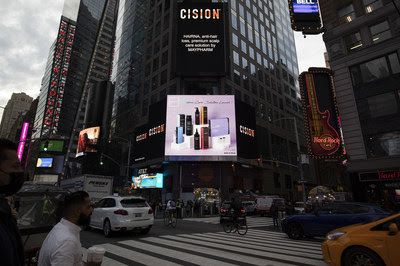Hundreds of thousands of people in the Philippines, Asia’s largest Roman Catholic nation, marked Christmas on Saturday without homes, adequate food and water, electricity and cellphone connections after a powerful typhoon left at least 375 people dead last week and devastated mostly central island provinces.
Elsewhere, New Zealanders are celebrating Christmas in the warmth of mid-summer with few restrictions, in one of the few countries in the world largely untouched by the omicron variant of COVID-19.
Australia is marking the holiday amid a surge of COVID-19 cases, worse than at any stage of the pandemic, which has forced states to reinstate mask mandates and other measures.
And adding more pain for travelers, airlines around the world canceled hundreds of flights as the omicron variant jumbled schedules and drew down staffing levels.
According to FlightAware, there are more than 3,900 canceled flights on Friday and Saturday, with close to half of the cancellations by Chinese airlines. About 30% of affected flights — more than 1,100 — were to, from or within the U.S. This is still a small fraction of global flights. FlightAware says it has tracked more than 100,000 arrivals in the past 24 hours.
Before Typhoon Rai hit on Dec. 16, millions of Filipinos were trooping back to shopping malls, public parks and churches after an alarming spike in infections in September eased considerably.
Gov. Arthur Yap of hard-hit Bohol province, where more than 100 people died in the typhoon and about 150,000 houses were damaged or destroyed, asked foreign aid agencies on Saturday to help provide temporary shelters and water-filtration systems to supplement Philippine government aid.
“I refuse to believe that there’s no Christmas spirit today among our people. They’re conservative Catholics. But it’s obviously very muted. There is overwhelming fear, there are no gifts, there were no Christmas Eve dinners, there is none of that today,” Yap told The Associated Press.
Yap said he was happy that many Filipinos could celebrate Christmas more safely after COVID-19 cases dropped, but he pleaded: “Please don’t forget us.”
In Manila, which was not hit by the typhoon, Filipino Catholics were relieved to be able to return to churches on Christmas, although only a fraction were allowed inside and worshippers were required to wear masks and stand at a safe distance from each other.
In South Korea, tough social distancing rules remained in place, requiring churches to allow only a limited number of worshippers — 70% of their seating capacity — and attendees had to be fully vaccinated.
In Seoul’s Yoido Full Gospel Church, the country’s biggest Protestant church, thousands of masked worshippers sang hymns and prayed as the service was broadcast online. Many churches across the country offered both in-person and online services.
South Korea has been grappling with soaring infections and deaths since it significantly eased its virus curbs in early November as part of efforts to return to pre-pandemic normalcy. The country was eventually forced to restore its toughest distancing guidelines, such as a four-person limit on social gatherings and a 9 p.m. curfew for restaurants and cafes.
Christmas celebrations were subdued in much of India, with more decorations than crowds as people feared a new wave of the omicron variant potentially sweeping the country in the coming weeks.
Authorities reintroduced nighttime curfews and restrictions on gatherings of more than five people in big cities like New Delhi and Mumbai. People attended midnight Mass in Mumbai and elsewhere but in smaller numbers.
Christians comprise just over 2% of India’s nearly 1.4 billion people.
In New Zealand, where 95% of adults have had at least one dose of the vaccine, making it one of the world’s most vaccinated populations, the only omicron cases that have been found have been safely contained at the border.
As the pandemic spread around the world the past two years, New Zealand used its isolation to its advantage. Border controls kept the worst of the virus at bay. By Christmas this year, New Zealand had recorded 50 deaths in a population of 5.5 million.
But that success has come at a cost. There were empty chairs at some tables this holiday season because some New Zealanders living and working overseas were not able to return home due to limits in the country’s managed isolation and quarantine program.
The traditional dining tables of a northern winter — turkey and all the trimmings — are common. But Kiwis also celebrate in an antipodean manner, with barbeques on beaches fringed by the native pohutukawa tree, which blooms only at Christmas.
At New Zealand’s Scott Base in Antarctica, some New Zealanders enjoyed a white Christmas. During summer on the frozen continent, the sun never dips below the horizon and in 24 hours of daylight the temperature hovers around 0 degrees Celsius.
Around 200 people pass through the base over the summer season — scientists, support staff and defense personnel who provide communications and other services. Numbers are lower this year because of the pandemic and all staff traveling to the continent have had to isolate and undergo COVID-19 testing before departure.
Most Pacific Island nations whose health systems might have been overwhelmed by COVID-19 outbreaks have largely managed to keep out the virus through strict border controls and high vaccination numbers.
Fiji has an ongoing outbreak and has had almost 700 deaths. About 92% of the adult population is now fully vaccinated, 97.7% have received at least one dose and many in the deeply religious nation will celebrate Christmas at traditional church services and family gatherings.
Health Secretary James Fong, in a Christmas message, urged Fijians to “please celebrate wisely.”
In remote Macuata province, residents of four villages received a special Christmas gift: Electricity was connected to their villages for the first time.
In his Christmas message, Australian Prime Minister Scott Morrison referred to the COVID-19 toll.
“This pandemic, it continues to buffet us,” Morrison said. “The omicron variant is just the latest challenge that we have faced. But together, always together and only together, we keep pushing through.”
The omicron variant is prevalent in some states and is estimated to represent more than 70% of all new cases in Queensland.
Summer heat might have discouraged outdoor Christmas feasts in some places. The temperature in Perth in Western Australia was expected to hit 42 degrees Celsius on Saturday, making it the hottest Christmas since records began more than a century ago.
On Christmas Eve, a student driver in the Northern Territory made off with a truck containing more than $10,000 in Christmas hams that was empty when it was found.
“This behavior can only be described as Grinch-like,” police detective Mark Bland said.
Source: Voice of America


